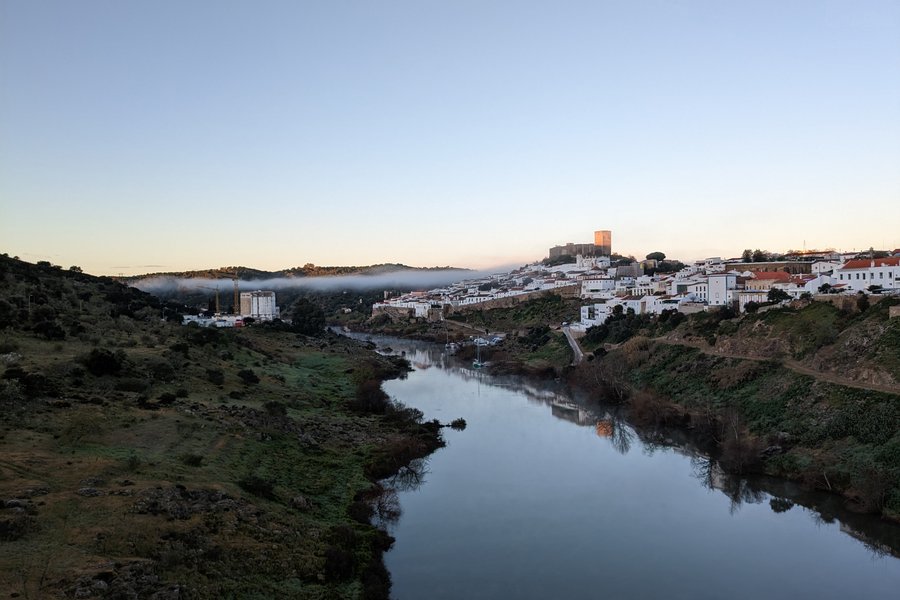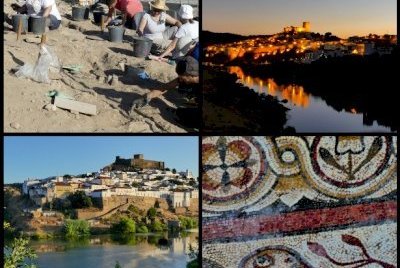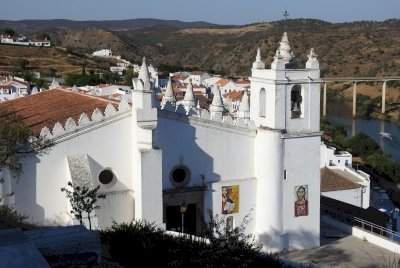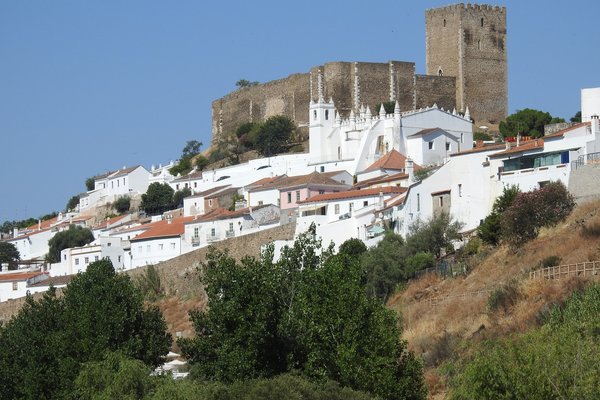Portugal
Mértola
Mértola is located in the rocky landscape of the eastern Alentejo on a hill above the mouth of the Rio Oeiras in the Rio Guadiana. Due to its strategically favourable location, Mértola was an important river port and trading hub in Classical Antiquity and the period of Umayyad conquest. The most significant historical building is the Church of Nossa Senhora da Anunciao built in the 12th century as a mosque.
Site Info
Official Information
- Full Name
- Mértola (ID: 6209)
- Country
- Portugal
- Status
-
On tentative list 2017
Site history
History of Mértola
- 2017: Added to Tentative List
- Added to tentative list
- Type
- Cultural
- Criteria
Links
All Links
No links available.
Community Information
- Community Category
- Urban landscape: Urban continuity
Travel Information
Recent Connections
News
No news.
Community Reviews
Show full reviews
Mértola is a charming town in the Alentejo region of Portugal, with a rich and varied history dating back to the Phoenicians, Romans, Visigoths and Arabs. Its strategic location on the River Guadiana gave it a maritime past. It continued to be a port until the 18th century, and the submerged wharf from that period can still be seen today.
The town lies at the foot of a medieval castle, and there are several archaeological sites in the town, including one at the southern end and one under the castle walls, where the ruins of a Late Antique baptistery have been discovered. The most impressive building in Mértola, however, is the former mosque, built during the Islamic period and later converted into the Church of Nossa Senhora da Anunciação. It's believed to be the only mosque in Portugal from this period that still retains its original features, such as the mihrab and horseshoe arches. The town's picturesque cobbled streets and white houses add to its charm.
During my visit, I had to explore the city's sites before they opened as I was catching an early bus. Nevertheless, I enjoyed the experience and took some nice pictures of the town, which was still covered in clouds (pictured). The best view of Mértola is from the main bridge over the Guadiana River (agree with Clyde).
OUV
Mértola was originally slated for World Heritage status in the near future, but according to this website, the Portuguese government seems to have prioritised other tentative …
Keep reading 0 comments
I visited this tentative WHS in July 2020. First of all, due to the amount of historic points of interest and limited opening hours (as well as the different lighting for photography), I'd definitely suggest staying over at least for 1 night.
Mertola is located on a hill over the Guadiana River, which is a very important life source for many birds (I unexpectedly managed to spot a pair of Golden Orioles near the river banks), fish (with as much as 6 endemic species of river fish) and fauna. Although Mertola is known as the national hunting capital of Portugal, there are a number of nature and biodiversity conservation programmes and initiatives going on such as the reintroduction of the Iberian lynx, even though its habitat clashes with locals' driving/speeding habits. The town owes much of its historical importance to the Guadiana River. Its strategic location made it an important fluvial commercial port between Alentejo and other parts of Al-Andalus (Arab Hispania) and Northern Africa, from the Roman times (the GR15 Great Guadiana Hiking Route passes through the Via Romana) up until the Umayyad conquest of Hispania. In the early Middle Ages, the Guadiana River lost most of its importance which led to the decline of the port of Mertola. However, the discovery and modern exploration of lode mining (the process by which gold is extracted directly from underground ores) in the Serra de Sancto Domingos, gave new importance to the river and town.
Mertola's main church, the …
Keep reading 0 comments
Mértola, a possible WHS for 2022 or 2023, was the last stop on my short trip by rental car through the north and center of Portugal last month. The town is located just like Vila Viçosa in the Alentejo region. I drove there via a quiet back road, where you’re allowed to drive 90 kilometers per hour. The largely uninhabited landscape is pretty with its cork oaks and olive trees, with some cows here and there that apparently can tolerate the heat.
On the last kilometers before Mértola I suddenly saw a remarkable warning sign: beware of devils? Of bats? A bit further on there was a textual explanation: the animal head represents a Lynx. It turns out that Iberian lynxes have been reintroduced in this area in recent years. The life of one of those already ended under a car and local authorities apparently wanted to prevent further damage. Not that it kept the Portuguese drivers from speeding though.
Mértola used to be an important river port. Already in ancient times it was inhabited by Phoenicians, Carthaginians and Romans. They took advantage of its strategic hillside location on the navigable Guadiana River. It held this position when the Moors conquered the Iberian Peninsula in the 8th century. The Muslims built a castle and a mosque there. For a long time, Mértola was an independent Islamic empire that had to defend itself against Arab and Christian neighbors.
The mosque dates from the 12th century and later was …
Keep reading 0 comments
